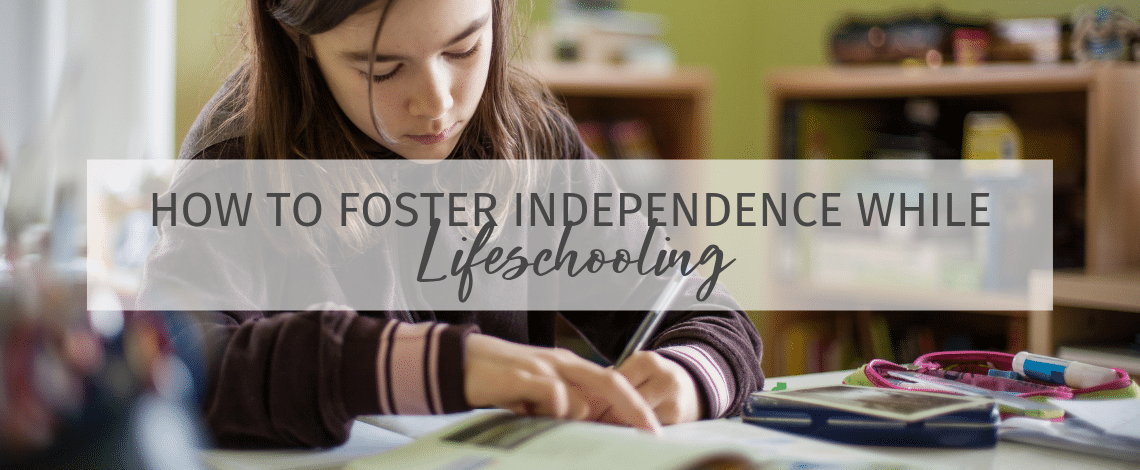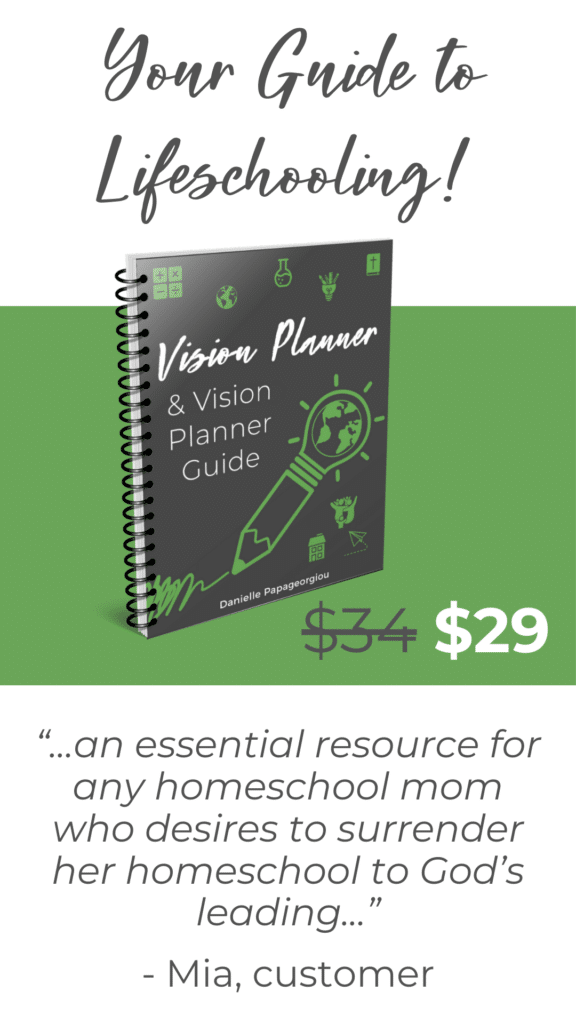I lived on scarce amounts of sleep, homeschooled from an old worn-out glider, and nursed a child ninety times a day. Okay maybe not ninety, but it sure felt like it all that time! This was my life. I was the mom of a middle schooler, kindergartener, and newborn.
As we stumbled through that year of school in a blur, I realized my oldest child had to become more independent or this mom would not survive for long.
That middle schooler is now an adult, and I’m so thankful I realized all those years ago that fostering independence was essential.
So how do you foster independence in children? Lifeschooling!
Lifeschooling is the Answer
Lifeschooling is bringing your homeschool and life circumstances together. It’s the freedom to teach your children what you feel is necessary and not adhering to the strict guidelines the school system often feels are important. It’s not doing school at home, but rather learning at home through real life.
And our life was getting very real!
Lifeschooling is not doing school at home, but rather learning at home through real life.
The Unexpected Homeschooler
Being a Self-Starter
As I thought about the way I ran our homeschool, it occurred to me I did everything. I neglected to teach my son how to start the day by himself. Wouldn’t this be a problem later in life?
Have you walked through a store and seen employees leaning on the checkout counter as if there’s nothing to do? There are jobs to do, yet they lack the initiative to do them on their own. I didn’t want that for my child. This kind of training starts at home.
I decided my son’s daily routine was the best place to foster independence and save my sanity. It took some time to organize everything.
Time? I know! Who has any of that? I promise you though, if you put in a little work, there will be a big payoff.
Step 1: Curriculum Guide
Before I could teach independence, I needed a system in place. I created a curriculum guide for my son. This was a list of all the lessons I wanted him to cover throughout the school year for each subject.
Bear in mind you are busy living life at your house and this is a guide. All those lessons may not be covered by the end of the year. Your child may become obsessed with whales, tornadoes, or the carpenter bees eating massive holes in the wood on your deck, and that becomes the focus of school for a week or so. It’s okay! That’s the purpose of lifeschooling.
The curriculum guide is a reference tool used for daily planning. It trains your child to look over his work and create a schedule for himself. This is a valuable habit at home and in the workplace. Students can learn this as early as upper elementary age.
I have created a whole post explaining a curriculum guide. It walks you step by step through the process so you can teach your child how to use it independently.
Step 2: Assignment Chart
The curriculum guide was a great start, but I had to develop a way for my son to list his assignments each day. I came up with an assignment chart where he filled in his daily lessons, along with any scheduled activities he participated in. I also included checkboxes for checking off his work as he completed it. Just like adults, kids get a sense of accomplishment when they check off a list, and this can be motivating.
Step 3: Record Keeping
Once my son filled in his own assignment chart and checked off the work, I realized he did a lot of the record-keeping for me. I added an attendance sheet, a reading log, a sheet to record grades for each subject, and had most of a portfolio put together for my yearly review. Can you say, “Boom!”?
An Important Step You Shouldn’t Forget
As with anything we learn, watching someone else do it the first time is helpful. I modeled using each of these tools for my son a couple of times. Then he tried them out himself with some supervision. Eventually, I stepped away and checked in occasionally making sure he understood the concept and completed his assignments. It only took a few weeks until he got the hang of it.
True Confessions of a Worn Out Mom
Perhaps you find yourself in the same position I was in all those years ago. Worn out and no idea how school would get done.
These tools have become the backbone of our homeschool and helped me stay sane. Years later, I taught the next child to be independent as well. It’s been a game-changer! I don’t nag my daughter about school. She plans out her day and completes it by herself. She knows I’m available if she has any questions.
My last child is about ready to go through this process. I will once again become the coach. Training and equipping my child to learn for herself.
How Do I Know It Works?
My son, who is now graduated, was my guinea pig for this method. I had no idea at the time if this would help him down the road, but it sure felt like we were on to something.
I have seen a lot of positive results. He has been able to:
- Map out his daily schedule with a planner
- Keep track of work hours in a log
- Initiate tasks before being asked and this has transferred to his job
- Take an online real estate course independently
- Break the course into actionable steps
- Create the study guides needed for studying
- Complete the course by the deadline using a timetable he set up
Were the subjects he learned in school important?
Of course. But the lessons he learned from becoming a self-starter, mapping out his daily tasks, and working independently have benefitted him far more than any history or math lesson he learned.

Fostering Independence in Lifeschooling
You will find many situations in Lifeschooling where you can foster independence in your children. It takes time and effort. Be patient and put it in the work because you are preparing your kids for adulting and will be so proud when you see your child at work and he’s not leaning on the counter!
- How to Foster Independence While Lifeschooling - June 25, 2019







2 Comments
Thank You!
I love Creation ministries international.